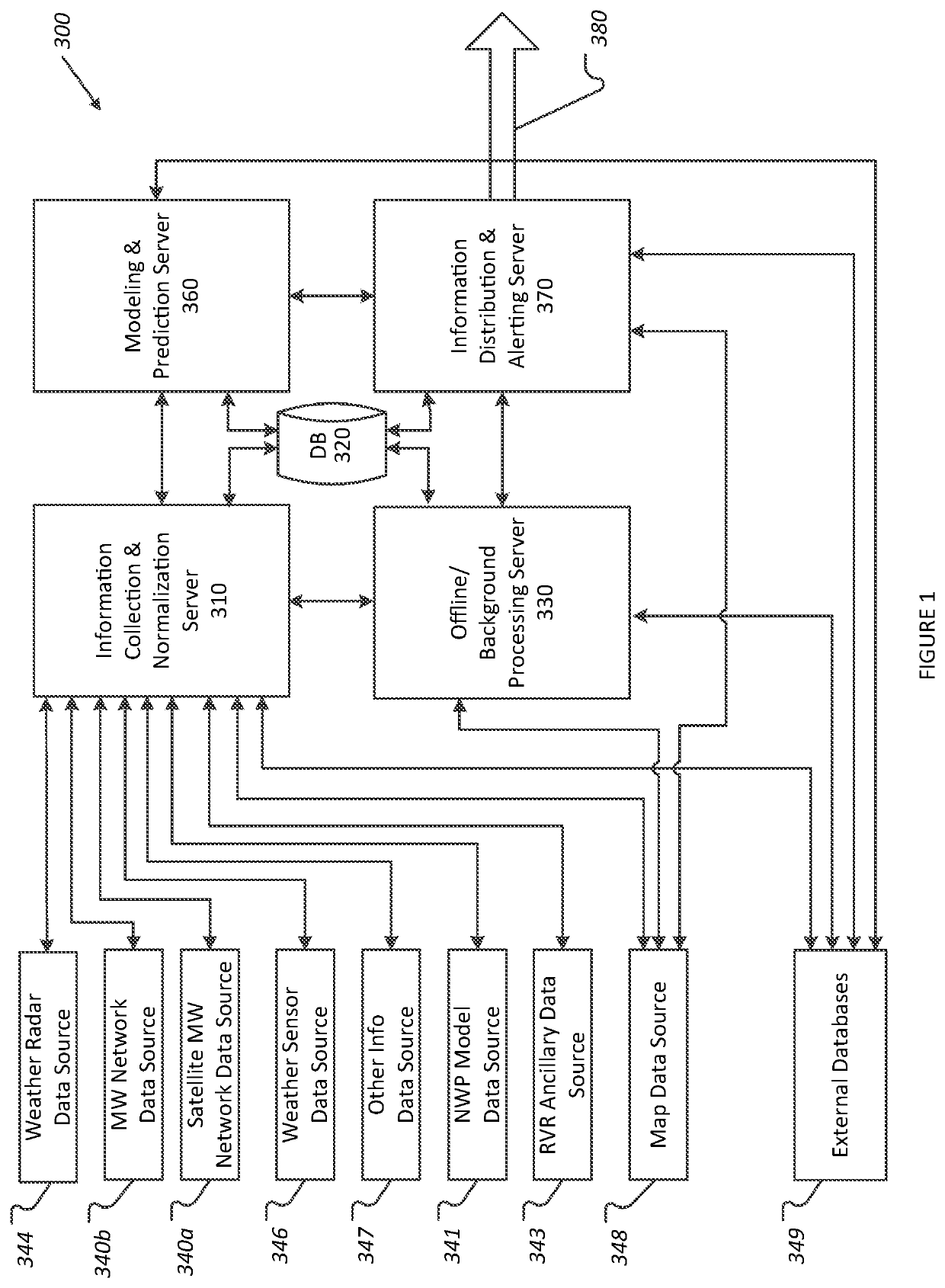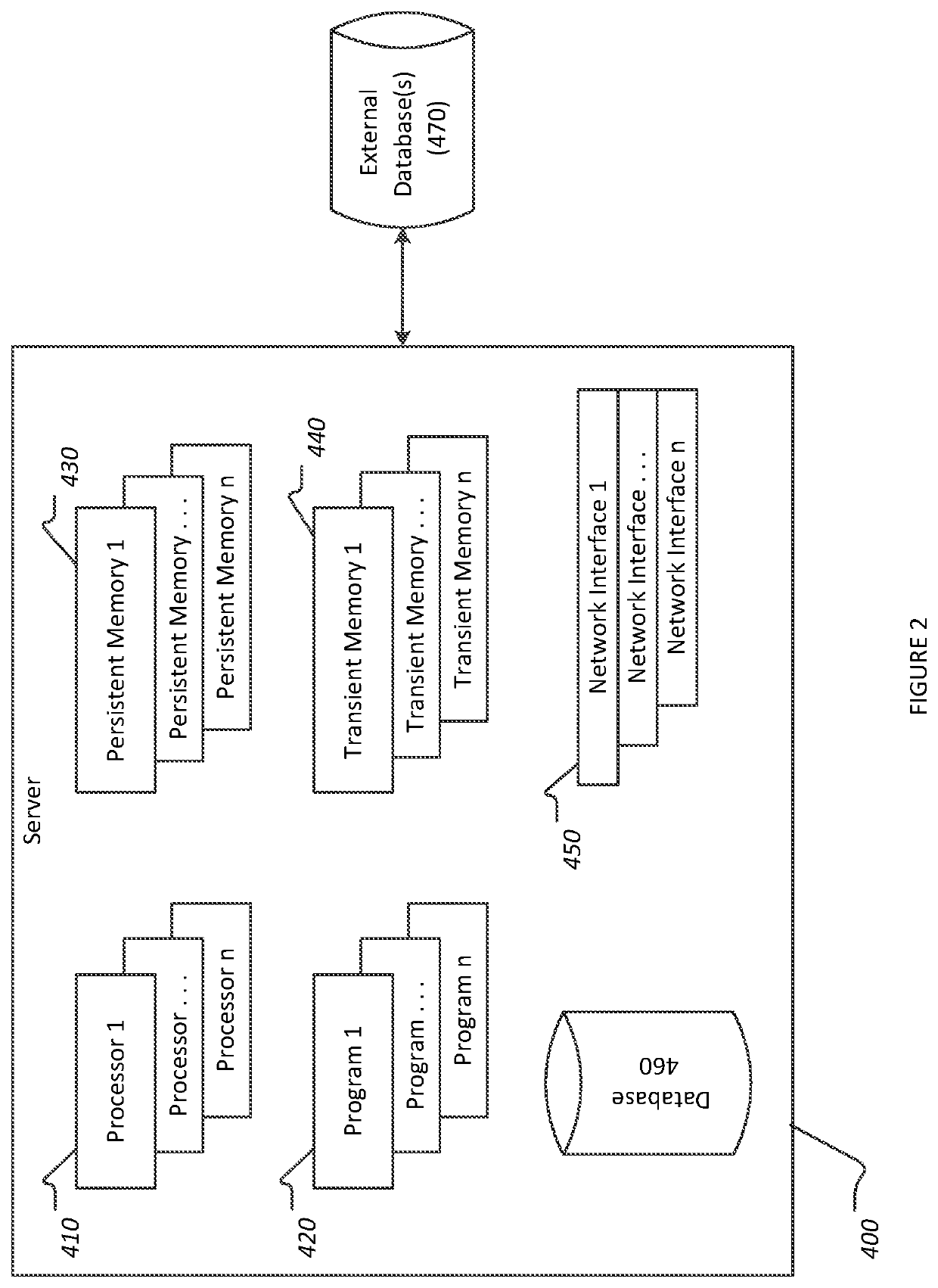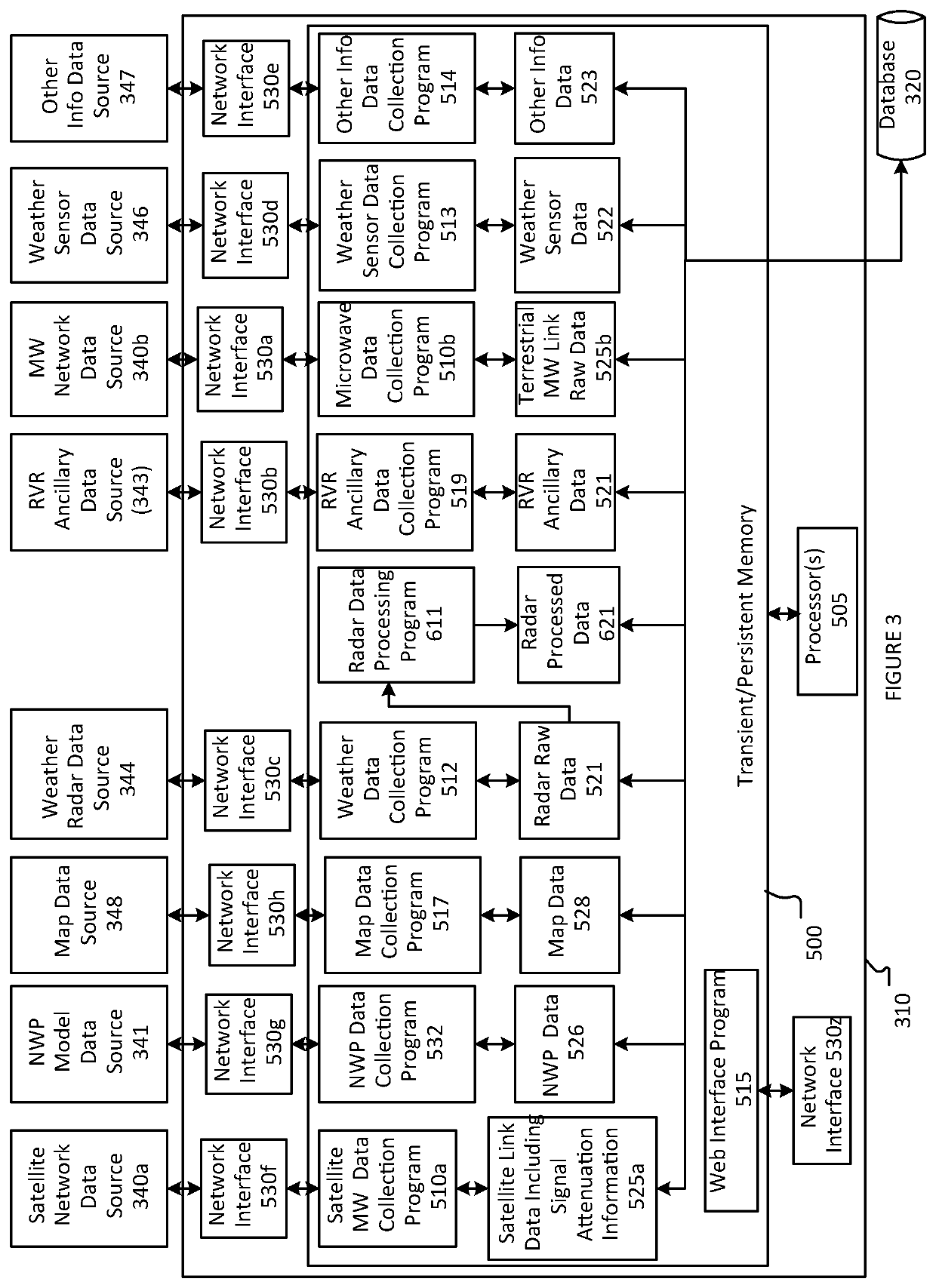Real-time data pipeline techniques for improving a fast weather forecasting system
a weather forecasting system and real-time data technology, applied in the direction of instruments, computing models, clear air turbulence detection/forecasting, etc., can solve the problems of flight cancellation and delay, difficult or impossible takeoff and landing, and delay in surface transportation
- Summary
- Abstract
- Description
- Claims
- Application Information
AI Technical Summary
Benefits of technology
Problems solved by technology
Method used
Image
Examples
Embodiment Construction
6.1 Overview
[0030]The systems and methods described herein provide a mechanism for collecting information from a diverse suite of sensors and systems, calculating the current precipitation, atmospheric liquid water content, or precipitable water and other atmospheric-based phenomena such as fog based upon these sensor readings, and predicting future precipitation and atmospheric-based phenomena. The described system and methods provide improved data collection and augmentation, dynamically updated data sets, significant accuracy improvements, and real-time projections.
[0031]“Real time” meteorology equipment, such as weather sensors, provides precipitation maps showing precipitation intensities and locations on a short time interval, e.g., less than a fifteen minute interval, or optionally less than a five minute interval, or optionally a one minute interval or thereabouts.
[0032]Diverse meteorological phenomena have diverse temporal evolution (e.g., humidity changes much more slowly ...
PUM
 Login to View More
Login to View More Abstract
Description
Claims
Application Information
 Login to View More
Login to View More - R&D
- Intellectual Property
- Life Sciences
- Materials
- Tech Scout
- Unparalleled Data Quality
- Higher Quality Content
- 60% Fewer Hallucinations
Browse by: Latest US Patents, China's latest patents, Technical Efficacy Thesaurus, Application Domain, Technology Topic, Popular Technical Reports.
© 2025 PatSnap. All rights reserved.Legal|Privacy policy|Modern Slavery Act Transparency Statement|Sitemap|About US| Contact US: help@patsnap.com



